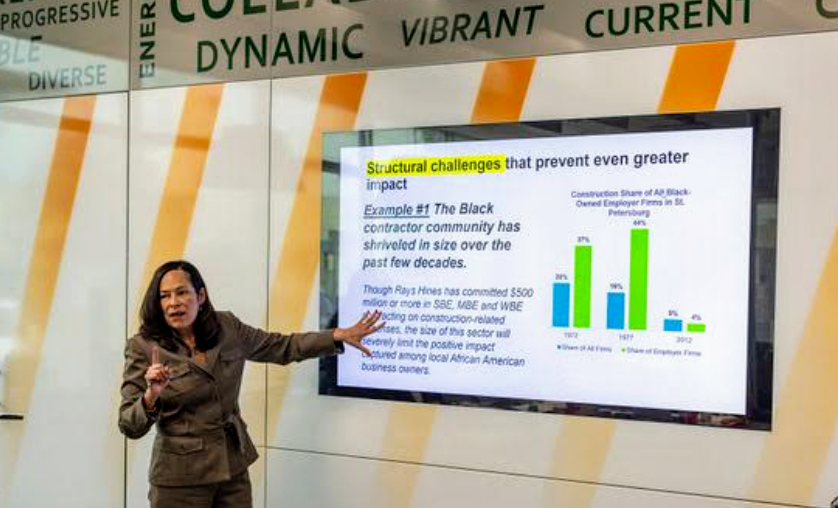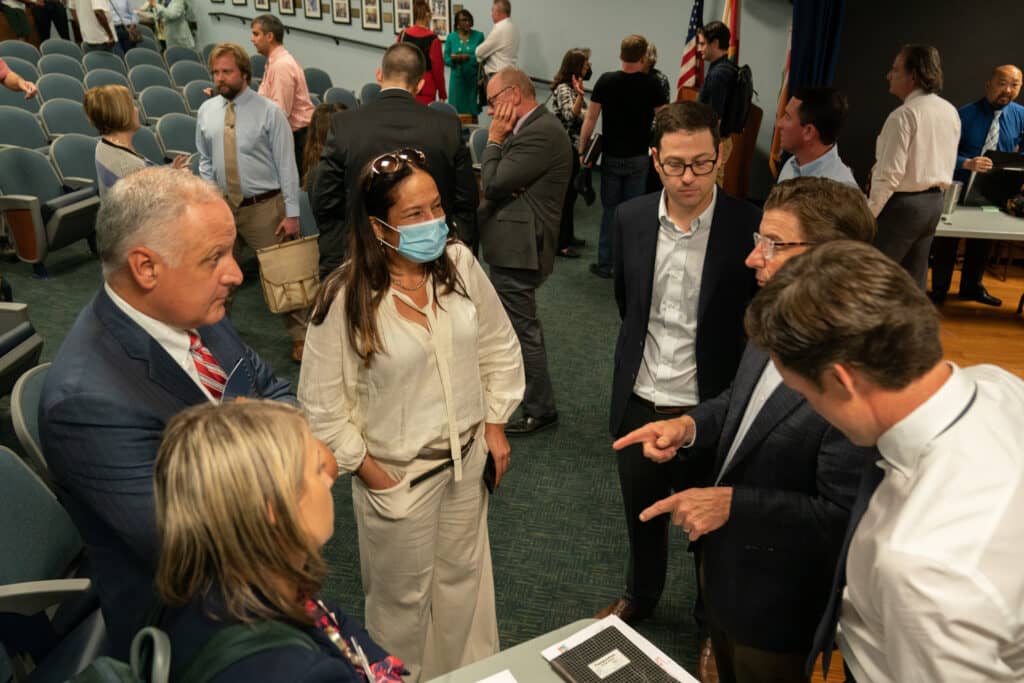Thrive
Why St. Pete’s community benefits council chairperson resigned

A founding member of St. Petersburg’s Community Benefits Advisory Council (CBAC) resigned amid potential conflict of interest discussions. However, Gypsy Gallardo believes she is better suited helping the city achieve its equitable economic development goals.
Mayor Ken Welch appointed Gallardo, CEO of Urban Market Analytics, to serve on the CBAC in 2022. The non-partisan board helps city officials measure and increase a project’s community impact.
Gallardo, the CBAC’s former chairperson, resigned amid the largest project in St. Petersburg history – the $6.5 billion Historic Gas Plant District redevelopment. She submitted her resignation letter Dec. 1, a day after the council welcomed four ad-hoc members to help direct its $50 million in community benefits.
In the letter, obtained by the Catalyst and addressed to Welch, Gallardo expressed her belief that “I can best serve in a different capacity during this pivotal stage.” She then noted that the mayor and city administrators recently discussed a potential intentional equity investment from the Tampa Bay Rays/Hines development team in the much-delayed Sankofa on the Deuces development, a project she formerly led.
“In light of your staff’s opinion that this may cause the appearance of a conflict – though none exists – I feel it important to clarify that my resignation from the CBA has nothing to do with the city’s suggestion for this use of funds,” Gallardo added.
In his reply, Welch thanked Gallardo for her “invaluable contributions” to the board. He also agreed with the need to rethink plans for a small business incubator at the Sankofa site “in a more strategic and sustainable way.”
“Your expertise and passion for community development are assets we greatly value, and I am confident that we will succeed in bringing positive economic opportunity through our collaborative work – just as we did after a long journey to establish the South St. Petersburg CRA (Community Redevelopment Area),” Welch wrote.
Welch appointed NAACP President Esther Eugene to replace Gallardo.

Gypsy Gallardo (center, left) speaks with the Moffit/TPA development group following in May 2022, following the first Community Benefits Advisory Council meeting. Photo: Equity Institute.
A timeline
In a subsequent interview, Gallardo explained the events that preceded her resignation. She said James Corbett, city development administrator, facilitated an August meeting between Rays/Hines officials and Tamara Felton-Howard, who assumed Gallardo’s role on the Sankofa project Jan. 1.
In a series of emails obtained through a public records request, Corbett said he intended to highlight potential synergies between the developer’s plans for a business incubator and the Sankofa project. The proposed development features 24 affordable townhomes and 40,000 square feet of commercial space.
Corbett wrote that he hoped for a more efficient use of $5 million in community benefits “rather than having separate incubator spaces on the Deuces (22nd Street South) and the Gas Plant site. However, lacking insight into the ongoing discussion, I wanted to caution against any potential conflict or perceived conflict,” Corbett added.
In his final email, dated Nov. 30, Corbett expressed confidence in Gallardo’s integrity and said he meant to raise awareness of potential perceptions. While she resigned the following day, Gallardo said that was a non-issue.
“We cleared it up in the end,” she said. “There was no conflict or potential conflict. That became clear …”

An aerial sketch of the Sankofa on the Deuces project, first approved in October 2021. Image: City of St. Petersburg.
Equitable economic development
Gallardo said St. Petersburg’s small, minority-owned businesses need her assistance more than the CBAC. She also believes she left the board “in good shape” with dedicated community advocates.
Gallardo and Eugene released a status update on St. Petersburg’s diversity, equity and inclusion (DEI) efforts Nov. 16. The report found that 4.6% of city contracts went to small business enterprises (SBEs) in fiscal year 2023, despite a codified 14% goal.
In addition, it states that less than one-tenth of one percent of procurement funding went to minority business enterprises (MBEs). “There’s a very real potential that we could underperform on the community benefits if we don’t get the ship in shape,” Gallardo said.
Gallardo said she spent over 100 hours analyzing the Rays/Hines’ $500 million commitment to small, minority and women-owned businesses. While she credited the development team for its proposal, Gallardo believes “we’re not ready to realize the opportunities.”
“It’s the city supporting sourcing the talent needed,” she added. “If the city piece is not in shape, we may lose hundreds of millions of dollars in local impacts. So, I waited and decided to work on these bigger community needs and partnerships.”
Gallardo believes the $5 million tentatively committed to the Sankofa incubator should support similar facilities at the Gas Plant. The properties are less than a mile apart, and she said it is unrealistic to fill both spaces.
She also explained that underperforming on lofty goals perpetuates cycles of doubt and disconnect between local officials and the African-American community. “It’s almost like we continue to make these politically driven decisions,” Gallardo said.
“Big hopes, big promises – and then underperforming or canceling. I think we’ve just got to get into a seriously data-driven mindset.”








S. Rose Smith-Hayes
December 11, 2023at8:13 pm
The Jordan Park Project ran into similar issues with their 30% Minority Contract goal. It is unrealistic because Minority Contractors in the area are not ready. Many did not have their licenses, did not have payroll information,did not have employee information, required insurance and other information required to work for HUD. We have to identify Minority Contractors in Pinellas, Hillsborough, Manatee and Sarasota Counties and help them get ready for this task. Even then, we might be lucky to meet 10 to 15% Minority Contractors. I believe the Jordan Park Project got 17 or 18% Minority Contractors and the goal was 30%.